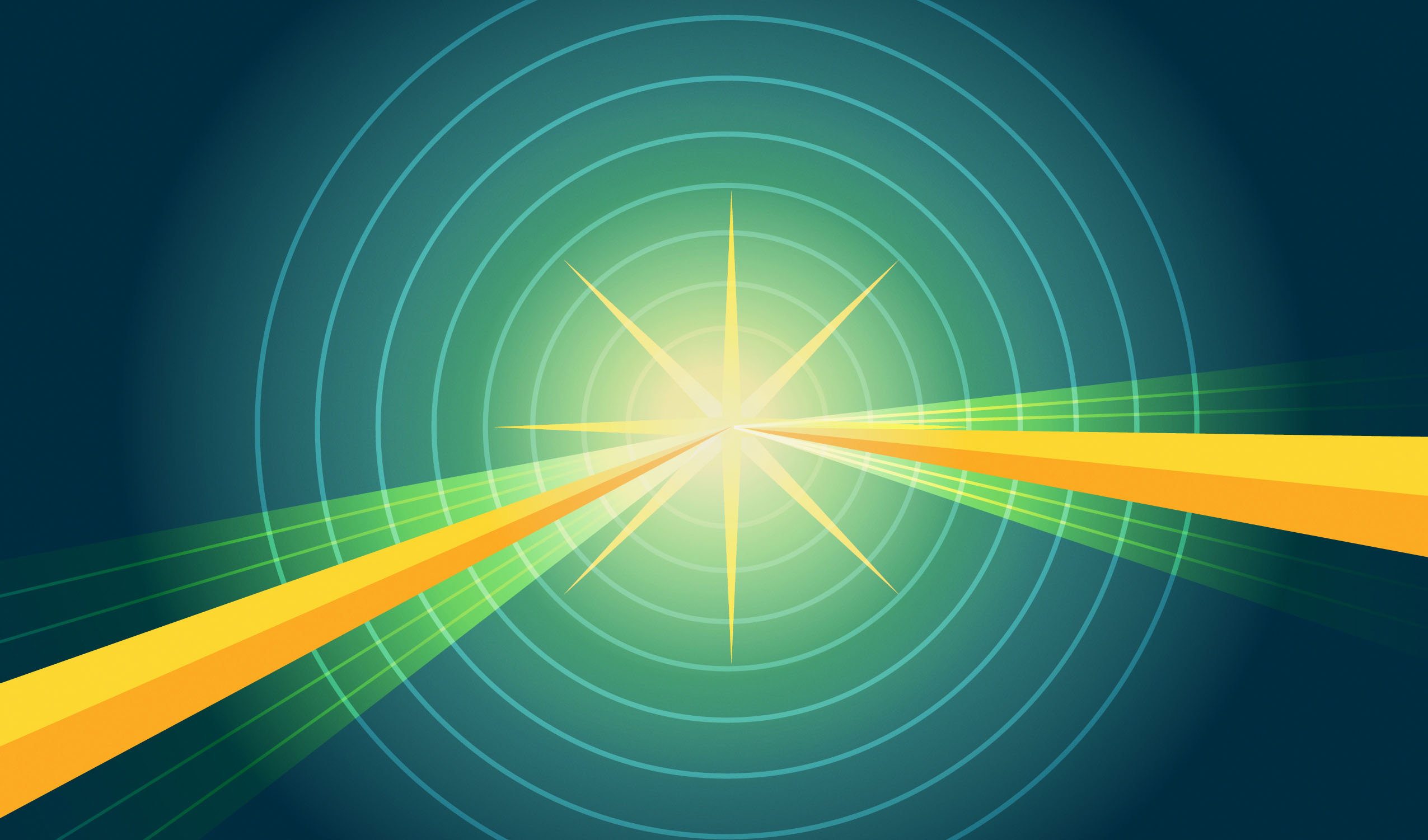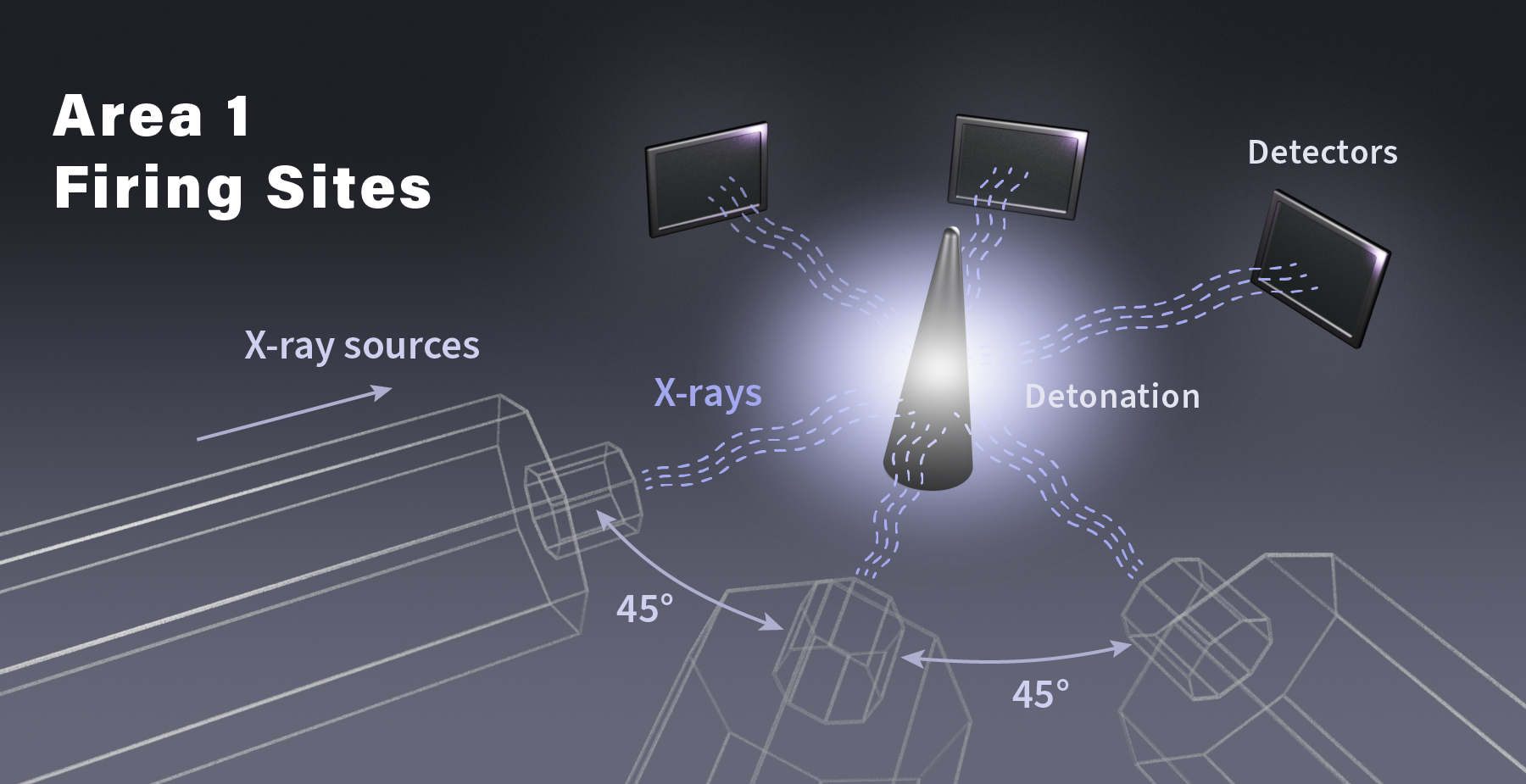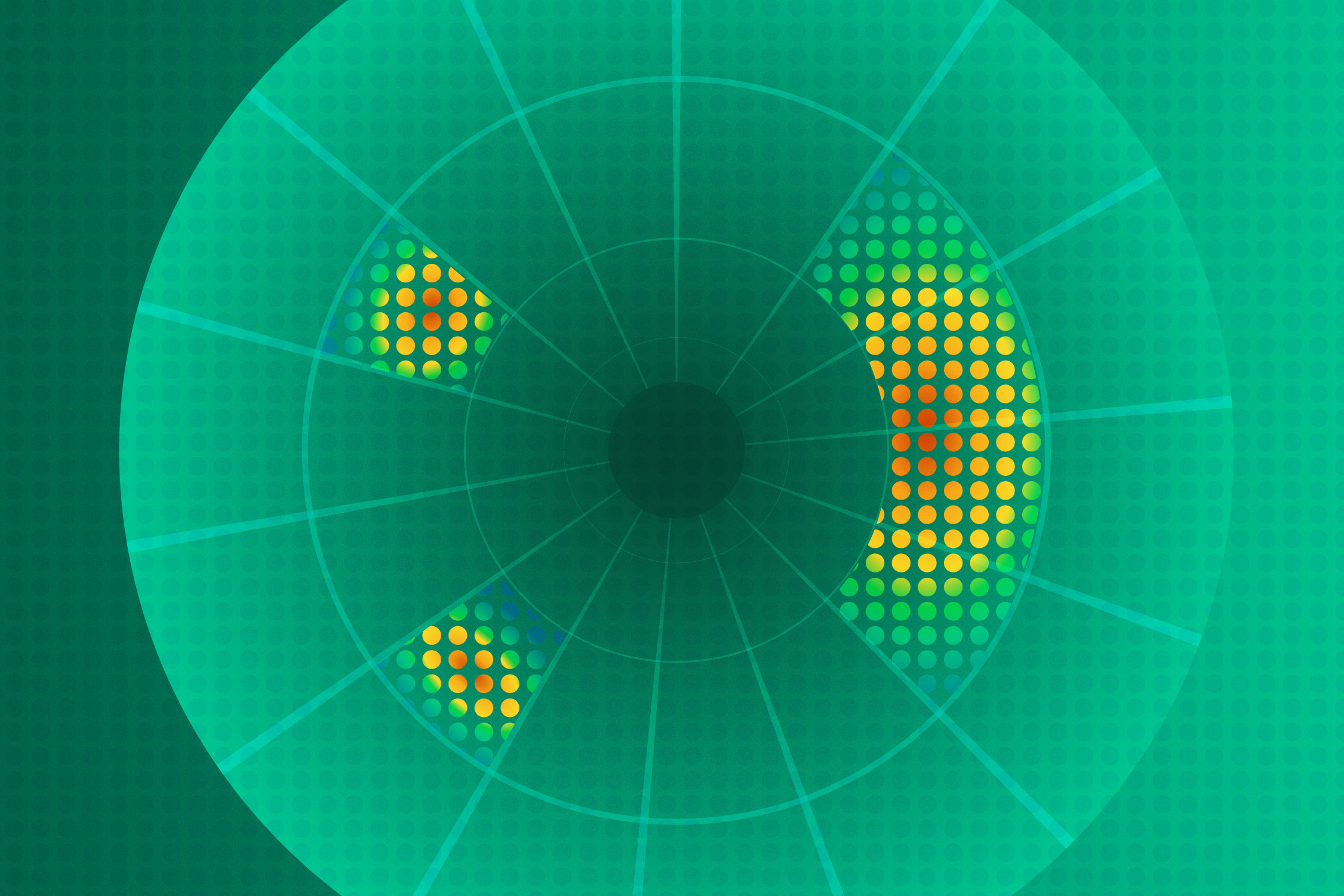The Dynamics of Dynamic Imaging
Real-time pictures of explosive events are vital to the Lab’s mission.
- Rebecca McDonald, Science Writer

Download a print-friendly version of this article.
Los Alamos scientists are good at doing things that seem impossible, like taking a picture of something that happens in less than seven-millionths of a second—such as an explosion. And not just one picture, but a series of images that reveal pivotal data about the material that exploded and the physics of the explosion. This so-called dynamic imaging is essential to the Lab’s stockpile stewardship mission because it helps scientists test and understand the fundamental characteristics of materials and explosive events to inform computational models and analyses without ever detonating an actual weapon. The Los Alamos dynamic imaging capability stands on the shoulders of decades of x-ray work, as the Lab has a long history of developing high-energy radiographic machines. Today, multiple modern dynamic imaging facilities provide an invaluable resource to the stockpile stewardship community, enabling experiments to be routed through the perfect set of tests for each unique deliverable. See how pRad, Area 1 Firing Sites, DARHT, and soon-to-be-built Scorpius, provide unique and complementary scientific data for the Lab’s mission.
Proton Radiography

Proton radiography, or pRad, is a capability at the Los Alamos Neutron Science Center (LANSCE) that uses protons from the particle accelerator and seven high-speed cameras to take 20–40 images of an explosion inside a confinement chamber. Using these images in conjunction with detailed data, scientists study the behavior of certain materials. They can distinguish materials by density—identifying specific metals and explosives—and ultimately answer crucial questions about each material, such as: How strong is it? How compressible is it? And how does it break? These characteristics, together with the time sequence of events, make pRad data unique and especially important for the national security mission. Using pRad, Los Alamos scientists deeply investigate how materials behave under extreme conditions so that they can tailor their next-level experiments appropriately.
Dual-Axis Radiographic Hydrodynamic Test Facility

Once scientists have a detailed, focused understanding of materials, they can conduct more integrated experiments with larger material amounts or more intricate arrangements to gain a more complex understanding of the explosion. These integrated experiments take place at the Dual-Axis Radiographic Hydrodynamic Test Facility (DARHT), which uses two single-pulse electron beams to create x-rays for imaging. The electrons are aimed at a metal target, which converts their energy into x-rays, which are then used to produce images of explosions from two fixed angles. This configuration allows DARHT to make matched static images from two angles, giving a three-dimensional depth of detail not possible in a single image.
While pRad provides a high level of detail about one phenomenon at a time, DARHT provides a bigger picture of more complex systems.
“pRad helps you build the model, DARHT tells you if you’ve got the model right,” says Associate Laboratory Director Ellen Cerreta.
Area 1 Firing Sites

Sometimes, the type of material and experiment at hand does not require the level of confinement provided at pRad or DARHT.
“For these instances, Los Alamos’s Area 1 Firing Sites provide a unique dynamic imaging capability without the constraints of a confinement vessel,” says physicist and Group Leader Gary Parker.
Operating without a vessel allows freedom in test configuration, permitting up to three viewing axes with relatively large fields of view. Because these are open-air firing sites, experiments can be scaled up and performed with larger quantities of high explosives. The Firing Sites use a technique called case radiography, which employs flash x-ray sources to image metal cases and their dynamic response when driven by high-explosive detonations.
Scorpius Accelerator

Scorpius is a new accelerator project planned for the Nevada National Security Site (NNSS) that will use an electron beam that can be broken into customized pulses to deliver x-rays and capture multiple images only hundreds of nanoseconds apart. When it’s ready, experiments at Scorpius will be similar to DARHT but with the added complexity of using subcritical amounts of plutonium instead of surrogate materials.
Collectively, pRad, DARHT, Area 1 Firing Sites, and Scorpius occupy an important and complementary niche in the spectrum of dynamic imaging requirements in support of the Lab’s Nuclear Weapons and Global Security Programs. Moreover, these Los Alamos capabilities are part of a larger dynamic imaging effort across the National Nuclear Security Agency complex. In Nevada at the NNSS, Sandia National Laboratories’ radiography system, called Cygnus, has been imaging subcritical experiments for more than 20 years. In addition, Lawrence Livermore National Laboratory’s Flash X Ray (FXR), is a radiography system in California similar to DARHT. These coupled capabilities ensure our nation’s scientists have the tools they need to understand the nature of weapons’ components and how to safely steward the national stockpile.
People Also Ask:
- What is the purpose of stockpile stewardship? The purpose of stockpile stewardship is to maintain the safety, security, and reliability of the U.S. nuclear weapons stockpile without nuclear explosive testing.
- What is a subcritical nuclear experiment? A subcritical nuclear experiment uses fissile materials and high explosives to study the behavior of those materials but does not result in a self-sustaining nuclear chain reaction.








